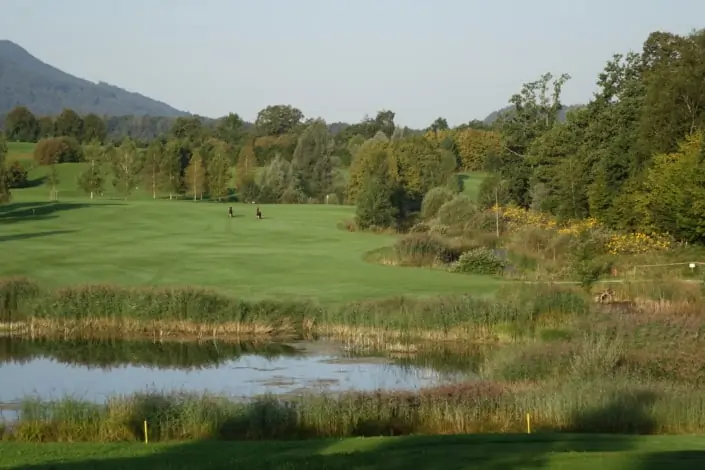At the base: Greenkeeping with an eye for detail
These two golf clubs couldn’t be in a more different location. One of them stands in front of his equipment shed next to the fairway mowers in Bad Tölz in Upper Bavaria and looks out over the foothills of the Alps. The other stands on the edge next to the 13th green and points to the mainland beyond the Flensburg Fjord. “Over there is Denmark.” Frank Hansen is the head greenkeeper at the Förde-Golf-Club Glücksburg. His colleague Manfred Beer works in the same position more than 1000 kilometers away at GC Isarwinkel.
Anyone who talks about dedicated greenkeeping under not always easy guidelines and about promoting environmental awareness on golf courses is in the right place with the gentlemen. Beer has been doing this job in Upper Bavaria for 25 years, his colleague Hansen has grown into a similar relationship with the facility in Schleswig-Holstein , and his son now works on the greenkeeping team.
Commitment and creativity in the grassroots work
As extreme as the spatial distance is, the conditions are similar in many respects. Both the Förde-Golf-Club Glücksburg and the GC Isarwinkel are among the pioneers in the Golf & Nature program of the German Golf Association, both have been re-certified several times with the Gold-Award. In both cases, however, one encounters clubs that do not draw on the full financial resources and are not among the frequently mentioned German flagship facilities. The GC Isarwinkel operates a nine-hole course with a six-hole short course, which is in tough competition with various courses in the south of Munich. In Glücksburg, Germany’s northernmost golf club, the 18-hole course was built on former agricultural land without a golf course designer with simple building specifications from 1972. In the years that followed, Hansen and his team remedied the weak points that resulted.
“Do it yourself” is the motto on both systems anyway. Beer is sitting in his workshop – he is actually a trained mechanic – and is talking about the combination of space maintenance and his projects for more biodiversity. “High-quality care of the fairways and greens is a must for a greenkeeper, the freestyle affects everything that is done around it.”
“Organize rough areas neatly”
The little things that can be implemented, that are adapted to local conditions, make the difference in the end – even without large financial resources. In Isarwinkel, for example, Beer decided on a large mixed hedge border on a property boundary, he tends the small meadow areas on embankments, he blocks off small orchids on the edge of the fairway in summer so that they are not shaved down when mowing. “You grow with the system, and you learn to find out what is right for the respective terrain.” According to his advice to colleagues who are just starting to deal with the topic of biodiversity, it is crucial to develop long-term planning and first to analyze the areas. “Basically, it makes sense to do less, but then do it properly,” sums up Manfred Beer, who also recommends new colleagues in his function as chairman of the Bavarian Greenkeeper Association, “for example, to organize the rough areas properly first.”
They have planted meadow orchards in both the north and south, even if cutting the trees means a lot of work. Both of them are also concerned with the topic of water. Thankfully, both systems are self-sufficient, albeit in different ways. While the GC Isarwinkel has a large reservoir, the Förde GC Glücksburg gets its water from its own well. “We’re not exhausting the volume,” says Hansen. Beer, on the other hand, has reached its limits in recent dry summers – “there were phases where it might have been enough for a week.” In the meantime, he has purchased a soil moisture meter from the club’s budget – “The working methods are changing, data is playing an increasingly important role. You have to go along with that.”













